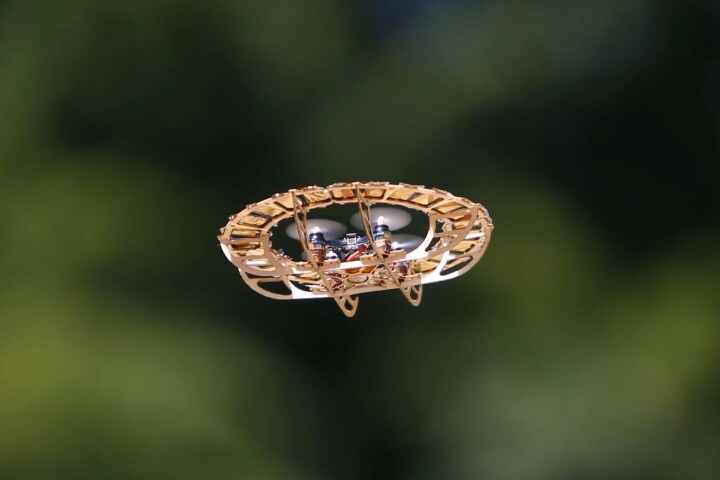Joby Aviation plans to run its own eVTOL air taxi services in the US, and it's now working to vastly expand its take-off and landing options, signing new partnerships that will let it put vertiports on top of multi-story car parks across America.
Helicopters are expensive and noisy. Thus, while they're a reasonably common sight in the skies, they represent a very tiny fraction of urban travel, and heliports are pretty rare. Electric VTOL air taxis will be much, much cheaper and quieter – they represent a radical democratization of VTOL transport, and the goal of the entire nascent urban air mobility industry is to put thousands of these things in the sky above every major city.
So while eVTOLs are expected to make use of the existing infrastructure as they get started, things are going to need to ramp up extremely fast on the ground when the sector starts to take off. And while it'll be sensible for some companies to buy some land and build the odd vertiport – like Lilium's planned facilities for inter-city eVTOL travel across Florida – companies focusing on cross-town urban transport will need access to prime real estate throughout major cities.

The opportunity for multi-story car park operators is enormous. They already own the perfect locations – within walking distance of where people are going en masse. They've got vast rooftop space available, often mostly unused, and the buildings are structurally designed to hold bulk weight already. They've also got elevators for easy access, and let's just say car parking and vehicle access are generally not a problem.
Today, the first official eVTOL/car park collaboration has been signed between Joby Aviation and car park operator Reef Technology, which owns more than 5,000 sites in "all key metropolitan areas in the US." The partnership intends to turn car parks into "mobility hubs," places where cross-town and inter-city eVTOL flights can connect with public transport, ride-sharing operations, micro-mobility options like scooters and ebikes, and car parking for what's expected to be a shrinking number of people that actually bother owning their own vehicles.
"Through the partnership," reads a press release, "Joby gains access to an unparalleled range of rooftop locations across all key metropolitan areas in the US, as well as a mechanism to fund the acquisition and development of new skyport sites. The companies will focus initially on Los Angeles, Miami, and the New York and San Francisco Bay Area metropolitan areas." The agreement will also give Joby access to NPG, a real estate acquisition company affiliated with Reef, with a view to selecting future sites based on their air mobility potential.

Under the terms of the deal, "Joby will enjoy a period of exclusivity during which it can secure long-term rooftop leases on skyport sites within NPG and REEF’s network of parking garages." Having already acquired Uber Elevate, Joby will be running its own passenger services through an app it's developing in-house, as well as through the Uber app – the two services will integrate with one another such that Ubers will handle first- and last-mile ground transport scheduled to connect perfectly with the aircraft. Joby will be offering eVTOL trips between 5-150 miles (8-240 km) in its five-seat, 200-mph (320-km/h) vectored thrust alien spaceship of an aircraft.
There will be challenges. Firstly, these car parks will need to be upgraded with beefy electrical systems capable of blast-charging the large batteries of eVTOL aircraft. But forward-looking car park operators are already putting more and more charge ports in to support the growing number of electric cars on the road.
More challenging will be the task of convincing aviation authorities to let eVTOLs fly over such heavily populated areas. Early air mobility operations may well spend most of their time flying over rivers, where if they fall out of the sky, only ducks and rowing teams (and passengers, to be fair) will be inconvenienced. Multi-story car parks are located exactly where you find pedestrians in bulk, and the FAA will rightly take a cautious approach.

But Joby continues to make all the right moves to dominate the early years of the advanced air mobility market. It's got one of the best aircraft in the sector, which has already been built and test-flown over a thousand times. It's also working closely with the FAA on certification, with a former FAA acting administrator now on its board, and has already received the first eVTOL military airworthiness accreditation from the US Air Force.
It's poised to own the customer experience through its ownership of Uber Elevate, it's the most cashed-up eVTOL company we're aware of, and it's hitting the stock exchange to raise even more funds through a SPAC merger. It's received heavy investment through Toyota, and will leverage that partnership's obvious strength when it comes time to manufacture these machines in volume. This infrastructure partnership puts Joby yet further ahead of the game, with the chance to build a huge network of vertiports while the rest of the market plays catch-up. Expect plenty of similar announcements from the competition over the coming months.
Source: Joby Aviation












